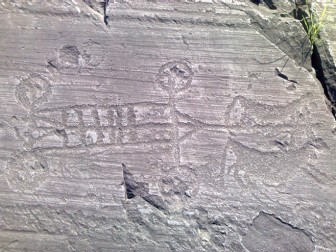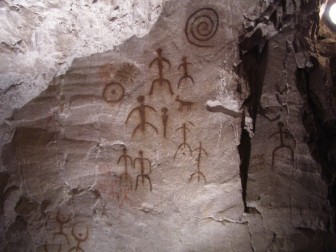Capo di Ponte
Looked after by UNESCO, the rock carvings at Capo di Ponte are mostly found in the Naquane National Park, the largest in Europe dedicated to rock art. Over 30.000 figures have been carved into a hundred or so rocks, the most impressive being the “Big Rock” with over 1.000 figures, some overlaid on others.
These were carved from Neolithic times until the Iron Age.
Also in Capo di Ponte are the two Cemmo Rocks which initiated research on Camonic art in 1900.
On one of these is the oldest known illustration of a cart. Not far away is the parish church of San Siro which, with Capo di Ponte’s other lovely church, San Salvatore’s, is one of the most interesting early medieval buildings in north Italy.
Rock carvings
 Valcamonica has the highest concentration of rock carvings in the world (over 200.000 have so far been discovered). They tell the story of this valley over a period of 10.000 years from Palaeolithic to Roman times. They are unique in that the story of the Camuni tribes is continuous from primitive tribes of hunters to a people more or less assimilated into the Roman world. For generations the Camuni carved their symbols of everyday life, hunting, war religious and propitious rites onto rocks to document their history.
Valcamonica has the highest concentration of rock carvings in the world (over 200.000 have so far been discovered). They tell the story of this valley over a period of 10.000 years from Palaeolithic to Roman times. They are unique in that the story of the Camuni tribes is continuous from primitive tribes of hunters to a people more or less assimilated into the Roman world. For generations the Camuni carved their symbols of everyday life, hunting, war religious and propitious rites onto rocks to document their history.
The Camonic rose
This figure is found again and again among the rock-carvings and has been adopted by the Region of Lombardy as its symbol. The oldest representation of the rose found so far is on a rock at Crape.
Photo: Erich Ferdinand, stracd

